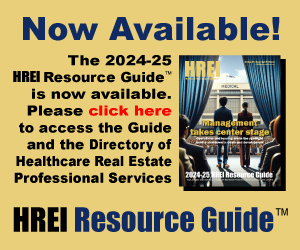Landlords are filling space with everything from telemedicine to optical shops
By Murray W. Wolf

Paradise Valley Medical Plaza enjoys a lower vacancy rate than most other medical office buildings in the Great Phoenix area, thanks in part to some unconventional tenants, such as Imaging Advantage, a teleradiology center. (Photo courtesy of The Plaza Cos.)
The consolidation of the healthcare industry has many medical office building (MOB) owners concerned – perhaps rightfully so. Mergers and acquisitions (M&As) among hospitals and health systems, as well as acquisitions of physician groups, are having an impact on real estate demand.
At a recent healthcare real estate (HRE) conference in Chicago, at least one speaker predicted that 80 percent of U.S. hospitals will be owned by a handful of large health systems within a few years. As the highly fragmented healthcare industry matures, the concern is that there will be fewer provider-clients, and that real estate and facilities portfolios will be streamlined, resulting in a shrinking universe of both clients and opportunities for healthcare real estate professionals.
Of course, the increased healthcare demand stoked by the Patient Protection and Affordable Care Act (PPACA) will offset some of the potential decline in real estate demand as 30 million or more newly insured Americans come online next year. It’s also not clear whether the degree of consolidation will be as drastic as some have predicted.
Even so, the healthcare industry is clearly placing far greater emphasis on increasing care quality and accountability while improving efficiency and reducing costs. That alone could result in reduced demand for existing healthcare facilities and MOB space.
The full content of this article is only available to paid subscribers. If you are an active subscriber, please log in. To subscribe, please click here: SUBSCRIBE





Comments are closed, but trackbacks and pingbacks are open.